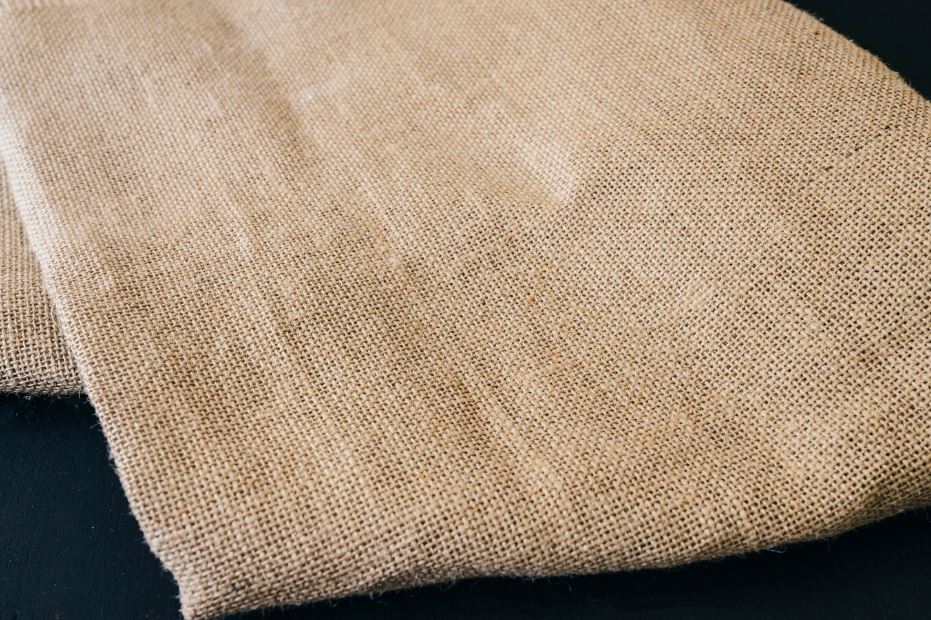
With its ability to effortlessly transition into new roles without ever losing its practical edge, canvas textile material has remarkably maintained its appeal across generations. Canvas is still one of the most reliable textiles for both artistic and commercial uses because it is made from thick yarns in a plain-weave construction. Sails and shelter marked the beginning of its inventive and resilient journey, which has since expanded to include everything from fashion statements to conservation science.
A close examination of its structure reveals how the plain weave’s simplicity results in an incredibly resilient surface. The fabric can tolerate a lot of strain thanks to its tightly interlaced design, which makes it perfect for rough use. Canvas keeps a flat, firm texture that is very resistant to wear, in contrast to twill weaves like denim, which have diagonal ridges. This implies that a canvas tote may withstand years of grocery shopping without breaking, something synthetic bags hardly ever do.
Key Facts About Canvas Textile Material
| Feature | Description |
|---|---|
| Common Names | Canvas, duck cloth, tarp fabric, tenting textile |
| Composition | Mostly cotton or linen; may include hemp or synthetic PVC |
| Weave Type | Plain weave (not twill, like denim) |
| Typical Thread Count | Between 50 and 100 |
| Key Properties | Heavy-duty, durable, water-resistant, versatile, and long-lasting |
| Most Popular Types | Plain canvas, duck canvas, cotton canvas, linen canvas, waxed canvas, synthetic canvas |
| Notable Uses | Bags, shoes, tents, sails, jackets, tarps, upholstery, artist canvases, outdoor gear |
| Sustainability Profile | Often eco-friendly; hemp and organic cotton versions preferred |
| Origin of the Name | Derived from Latin “cannabis,” reflecting hemp origins |
| Leading Producer Today | China |
Canvas has become almost sacred in the world of art. It serves as the actual basis for some of the most significant visual artworks in history when stretched across wooden frames and prepared with gesso. Painters can apply layers smoothly by stretching the canvas and priming it with chalk or gesso made of synthetic latex. This procedure greatly prolongs the life of the fabric underneath while also improving paint application.
Due in large part to the humidity that warped wood in coastal cities, Venetian artists were among the first to adopt canvas over conventional wood panels during the Renaissance. Their decision led to a change throughout Europe, ultimately making canvas the standard oil painting surface. From Jackson Pollock to Helen Frankenthaler, painters today have left a lasting legacy by allowing the canvas’s unpolished texture to inform their work. They frequently stain the canvas directly without primer to evoke strong feelings.
Outside of galleries, canvas has been especially useful in outdoor environments. For example, waxed cotton canvas ages gracefully and provides weather resistance. This process, which uses natural wax to seal the fibers and form a water-repellent barrier, is used by many outdoor gear brands. In contrast to synthetic alternatives that eventually crack, waxed canvas acquires a unique patina that reveals the history of its use in each fold and stain.
Canvas is becoming more well-known in the sustainable fashion industry as a result of its durability. Canvas made of hemp or organic cotton has become popular among brands trying to lessen their environmental impact. These materials guarantee that a garment or accessory lasts far longer than fast-fashion alternatives because they are not only biodegradable but also incredibly durable. Designers who incorporate canvas into their collections are in line with the principles of circular production, which substitutes longer life cycles for disposable fashions.
The dependability and structural integrity of this material are responsible for the worldwide recognition of some of the most recognizable fashion accessories, such as the coated canvas bags from Louis Vuitton. The underlying fabric is simple canvas, despite the high-gloss finish suggesting luxury, demonstrating how prestige and functionality can coexist harmoniously. Conversely, streetwear mainstays like Converse Chuck Taylors wouldn’t exist without their durable canvas uppers that stretch without rupturing.
The fabric is also very dependable in utility settings due to its high resistance to tearing and stretching. Conveyor belts, ammunition pouches, duffel bags, and military tents have all been made with it. Its steady tensile strength guarantees that objects remain intact even under heavy loads, particularly in duck canvas with a higher thread density. Canvas is essential for warehouses, campsites, and even home remodeling projects because of these characteristics.
Digital canvas prints have created new opportunities for artists. Canvas printing has become more popular among artists and photographers than glossy paper because of its texture, which enhances the visual experience by adding a tactile element. The Giclée process combines traditional materials with modern techniques to produce museum-quality results on pre-stretched canvas using high-resolution inkjet printing.
Canvas has also become a popular research topic for conservationists. Preserving ancient paintings has benefited greatly from an understanding of its mechanical behavior under varying humidity levels. Researchers can now forecast how a canvas might respond over decades by employing advanced modeling, nanoindentation, and zero-span strength testing. These observations aid museums in maintaining stability and minimizing deterioration, particularly for antique pieces created from linen canvases derived from flax.
The versatility of canvas greatly benefits modern homes and decor. This fabric works well for both casually stylish floor cushions and heavy-duty upholstery covers. Designers love it for customized accents because it adds structure without being stiff and holds dyes beautifully. When weight or fragility is an issue, printed canvas wall art and photo backdrops provide a cost-effective, durable substitute for framed glass pieces.
Canvas fabric’s multiple uses are what make it so inventive. It’s supporting colorful acrylics on a gallery wall in one example. In another, it’s protecting an electronics-filled backpack from an unexpected downpour. Canvas’ versatility and rich historical heritage make it a choice that is both forward-thinking and nostalgic.
Canvas needs to be maintained despite its advantages. Untreated cotton canvas can absorb moisture if it is not sealed, and its edges have a tendency to fray if not hemmed correctly. However, the fabric’s many advantages easily outweigh these small disadvantages. When canvas is finished properly, it becomes extremely durable in addition to being wearable and displayable.
